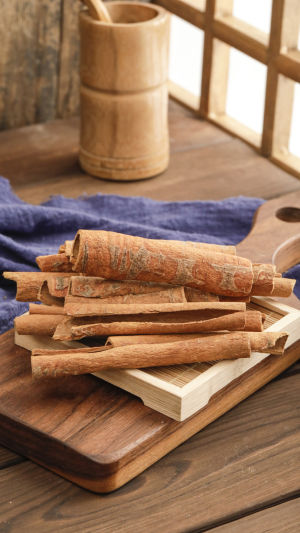Cinnamon is a common spice that usually comes from the inner layer of the cinnamon tree and has a unique aroma and taste. There are two common varieties of cinnamon, Ceylon cinnamon and Chinese cinnamon. Ceylon cinnamon is produced in Sri Lanka and has a milder taste and softer aroma. It is often used in baking and dessert making.
Chinese cinnamon is produced in southern China, has a stronger taste and stronger aroma, and is mainly used for seasoning and spice-like effects in cooking. The main component of cinnamon is volatile oil, the main component of which is cinnamic aldehyde, which gives cinnamon its unique fragrance.
Cinnamon has a wide range of applications including:
1. Cooking seasoning: Cinnamon is often used in cooking to add aroma and flavor to various foods, especially sweet foods such as pastries, desserts, and drinks. It can also be used to season meats, vegetables, soups, etc.
Making cinnamon tea is easy. Here's a common approach:
Material:
- 1 cinnamon stick or 1 teaspoon ground cinnamon
- 2 glasses of water
- 1 sliced lemon (optional)
- Honey or other sweetener (adjust to personal taste)
step:
1. Boil the water.
2. If using cinnamon sticks, place them in boiling water and cook over medium-low heat for 10-15 minutes. If using ground cinnamon, add it to the boiling water and stir well.
3. If you like lemon flavor, add lemon slices to your tea.
4. After turning off the heat, use a strainer to filter out any cinnamon sticks or other solid particles.
5. Add an appropriate amount of honey or other sweeteners according to personal taste.
6. Pour the tea into a cup and enjoy while hot.
2. Baked Goods: Cinnamon is a staple spice in a variety of baked items, including cinnamon buns, rolls, and noodles. It imparts a distinct sweetness to these foods.
3. Beverage preparation: Cinnamon can be used to prepare various drinks, such as cinnamon tea, cinnamon coffee, cinnamon latte, etc. It adds aroma and taste to the drink.
4. Medicinal Values: Cinnamon is used as an herbal medicine in traditional medicine and is believed to have some health benefits. It is thought to have anti-inflammatory, antioxidant, hypoglycemic, and antibacterial properties.
5. Aromatherapy and Personal Care: The aroma and taste of cinnamon are often used in aromatherapy and personal care products, such as scented candles, perfumes, soaps, and shampoos.
The processing of cinnamon usually involves the following steps:
1. Picking: Cinnamon is obtained from the inner layer of the cinnamon tree, so the mature bark needs to be picked first.
2. Peeling: The harvested bark needs to be peeled off with other tools to expose the inner layer.
3. Sun-drying: The stripped endodermis needs to be dried or exposed to the sun to remove moisture. After drying, the color of the endodermis will darken and become brittle and hard.
4. Curling: The sun-dried inner layer needs to be curled to form the typical cinnamon bark shape. The process usually involves cutting, arranging, and curling the inner layer into usable cinnamon bark.
5. Packaging and Storage: Finally, the processed cinnamon bark is packed to prevent moisture and contamination. They are usually kept in dry form for long-term storage and use.
It should be noted that different regions and different processing plants may have slightly different processing methods and processes, but the above steps are the usual cinnamon processing procedures.





